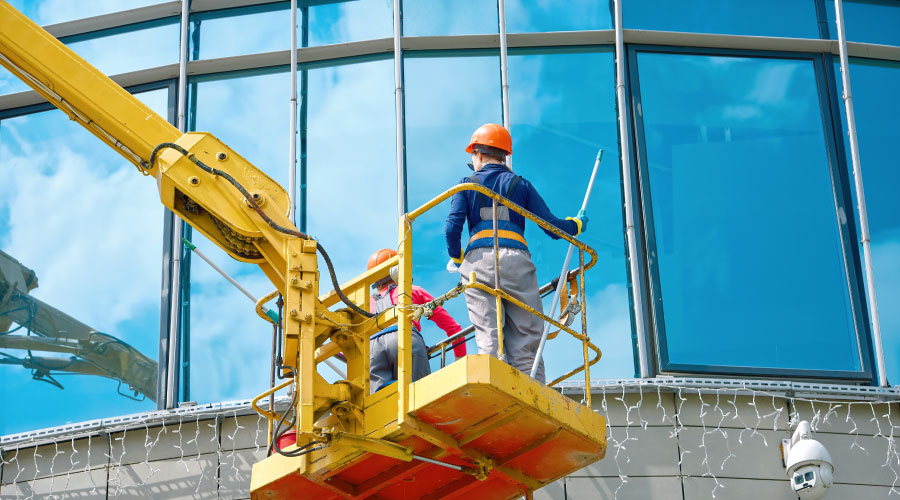Who is Responsible for Workplace Safety?
Jobsites often have multiple employers. Know these OSHA categories to avoid being cited for hazards
By Julie Sobelman, Contributing Writer
It is common for staff from multiple employers to work in the same location. Leased facilities may have multiple tenants, single occupant spaces may have facilities operations and maintenance and other services (cafeteria, laundry, waste management, etc.) provided by separate companies, contractors and sub-contractors. As a matter of fact, it is unusual for everyone in a given workplace to have the same employer. With this complex employer arrangement who is responsible for workplace safety?
The Occupational Safety and Health Administration addresses this in OSHA directive CPL 02-00-124. Each employer at a multi-employer worksite is categorized based on their respective roles with regard to a specific hazard: creating, exposing, correcting or controlling. A single employer may fall into more than one category. Once OSHA categorizes an employer, the agency will evaluate whether the employer met its obligations under OSHA requirements and if not, may be cited.
A creating employer is the employer that caused a hazardous condition that violates an OSHA standard. A creating employer can be cited even if the only employees exposed are those of other employers at the multi-employer worksite. Here’s an example:
Exterior window cleaning is being done from ladders and mobile work platforms. The company performing the service did not establish a “safe area” beneath and around the work. Employees entering or leaving the building are exposed to overhead hazards as well as hoses across the ground in the immediate vicinity. An employee entering the building trips and is injured. The “creating employer” – in this case the window cleaning company – is responsible for creating the hazardous condition even though the injured person worked for someone else.
Exposing employers are those whose staff are exposed to a hazard on a multiemployer worksite. Only exposing employers can be cited for a general duty clause violation. If the exposing employer created the violation, it is citable as a creating employer. If the violation was created by another employer, the exposing employer is citable if it knew of the hazardous condition or “failed to exercise reasonable diligence” to discover the condition and failed to take steps consistent with its authority to protect its employees.
If the exposing employer lacks the authority to correct the hazard, it is citable if it fails to ask the creating and/or controlling employer to correct the hazard, inform employees of the hazard or take reasonable alternative protective measures. In extreme circumstances, the exposing employer is citable for failing to remove its employees from the job to avoid the hazard.
In the above example, the exposing employer is the one whose staff work in the building. Examples of actions that could have been taken by this employer include placing cones or barriers around the work area, requesting that the contractor place cones or barriers around the work area and waiting to see that it was done, notifying staff that work was taking place and asking them to approach or enter the building from another direction, etc. If supervisory/management staff of the exposing employer walked past the hazard without taking any action, they could be cited for “failing to exercise reasonable diligence”.
The correcting employer is the entity responsible for correcting the hazardous condition.
In the example scenario, the window washing company could be the correcting employer, the building occupant could be the correcting employer or the building owner/manager who hired the window washing company could be the correcting employer – this situation could be easily corrected requiring no special technical expertise.
Finally, the controlling employer is “one who has general supervisory authority over the worksite, including the power to correct safety and health violations itself or require others to correct them. Control can be established by contract or, in the absence of explicit contractual provisions, by the exercise of control in practice.”
So who has supervisory authority over the example worksite? The company who hired the window washers? The window washing company itself? The company occupying the building?
All of them have some level of authority and control. For that matter, any person walking past could respectfully ask the people performing the work to move hoses or isolate the area from foot traffic – see something say something.
Safety responsibility at multi-employer worksites is complex and nuanced. Beyond the issue of regulatory compliance is the bigger issue of safety management and good communication. If facility managers aren’t sure who is “in charge” or responsible, be pro-active and discuss the subject with key persons at the site to work toward a common goal of a safe workplace for all parties.
Julie Sobelman CIH, CSP, LEED AP, is an industry consultant with 35 years of professional experience partnering with clients to minimize risks, achieve environmental health and safety (EHS) objectives, and ensuring the delivery of high-quality EHS compliance and management systems services.
Related Topics:












